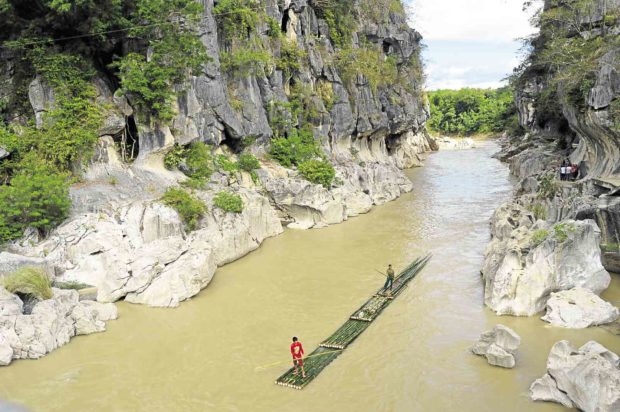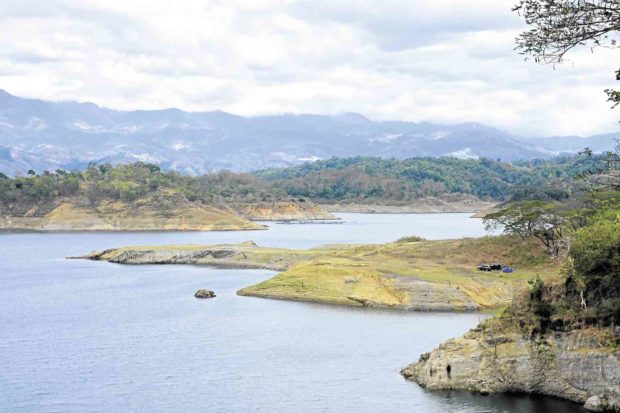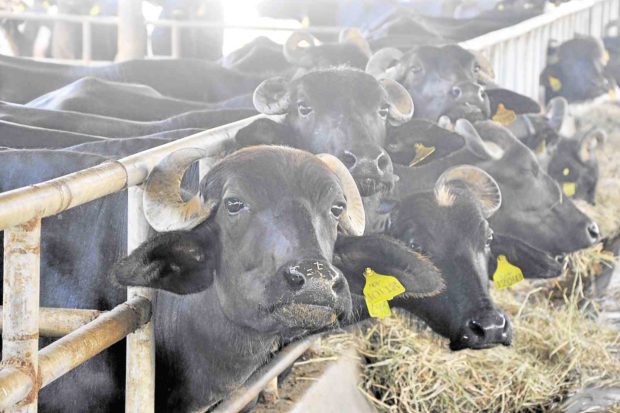48 hours: Nueva Ecija

The Minalungao National Park in General Tinio town
CABANATUAN CITY—Aside from its bounty as the country’s top rice-producing province, Nueva Ecija has on its plate quadruple treats for ecotourism, science-based knowledge in agriculture, historical recalls and spiritual rejuvenation.
In Gapan City, 95 kilometers from Metro Manila via Maharlika Highway, the Three Kings parish church is ready for visitors on a spiritual journey.
The National Shrine of the Divina Pastora, made of bricks and adobe, houses a 1.5-meter wooden antique image approved by then Pope John Paul II as being “worthy of devotion.”
Canonically crowned in 1964, the image abounds with accounts of miraculous interventions by supplicants.
During the Spanish colonial period, the belfry’s four huge bells pealed six times daily to tell the people the time for waking up, midmorning snack and lunch preparation, lunch, afternoon siesta, Angelus and dinner, and bedtime.
Article continues after this advertisementEastward at 21 km is General Tinio town, where the Minalungao National Park, one of the few remaining natural environments in the country, is found.
Article continues after this advertisementThe 2,018-hectare hilly protected area has 16-meter-high walls of unique limestone rock formations and a river below, whose water is ideal for swimming, rafting and cliff diving.
A viewdeck with a huge cross at the summit of a hill offers a panorama typical among mountain foothills after a climb of 1,000 steps.
The park also boasts of a system of subterranean caverns yet fully unexplored.
“We are in constant dialog with officials of the Department of Environment and Natural Resources for further improvement of this hidden ecotourism splendor,” Mayor Ferdinand Bote said.

Pantabangan dam complex
Famous camps
Near the town center of General Tinio is the 35,467-hectare reservation which hosts the Army’s 7th Infantry Division, the military’s National Training Center and a drug abuse rehabilitation center in Palayan City.
In the camp’s cantonment area is the Aquino-Diokno Memorial and a museum-replica of the facility where then Senators Benigno Aquino Jr. and Jose W. Diokno were detained during the early days of strongman Ferdinand Marcos’ martial rule. Inside the memorial is the Center for Human Rights Dialogue.
On the way down to Cabanatuan City is Camp Pangatian Memorial Shrine, where 516 US war prisoners were rescued by American soldiers and Filipino guerrillas during World War II on Jan. 30, 1945.
A “Memorare” put up by the National Historical Commission of the Philippines described the event as “one of the successful missions of its type in the annals of the US military history.”
Science community
North of the province is the Science City of Muñoz, the hub of science-oriented agencies.
At the Philippine Rice Research Institute (PhilRice), new breeds of inbred and hybrid rice are developed. In the main building is a gene bank keeping an accessioned 7,129 rice-seed variety collections, including those no longer in use.
“These (seeds) should be conserved as these are not only important as the building blocks in breeding new varieties,” said Dr. Eufemio Rasco Jr., former PhilRice executive director. “These are part of our national heritage as well.”
Visitors can go to the demo area for the agency’s “Future Farm Project.” Figures of celebrities are showcased in what is called “rice paddy art.”
Ten kilometers away is Central Luzon State University (CLSU), named a model agricultural tourism site for Luzon by the Department of Tourism.
On its 658-ha campus, the preserved landmarks of the former Central Luzon Agricultural School (established in 1907 and the forerunner of CLSU) exude stories of the life and times of the hardy young students then.
These are reminders that the school is a miniature model of the Philippines where students are exposed to campus politics, citizenship training, scientific farming, a balance of practicum and academics, independent farm work, structured life in dormitories, and mess hall experiences.
The landmarks include Reimer’s Hall, a century-old dungon tree in the middle of a road, a water reservoir, a monument of Dr. Jose Rizal in barong Tagalog and a concrete representation of a carabao and a farmer with his plow which adorns the main gate of the farm school.
Reimer’s Hall was for stage plays, cinema, discourses by the country’s presidents and top government leaders. Then President Ramon Magsaysay was to be guest speaker on April 5, 1955, for the school’s golden jubilee and graduation programs. He was also to be conferred the honorary degree of doctor of agricultural education.
Magsaysay died in a plane crash three weeks earlier. On the appointed date, an empty chair draped in black and a speaker’s stand decorated with academic regalia, diploma and citations for him were seen on stage.
The Commission on Higher Education has recognized CLSU’s academic programs in agriculture, agricultural engineering, biology, fisheries, teacher education and veterinary medicine as centers of
excellence.
More to appreciate
At the Philippine Carabao Center, hundreds of top performing dairy carabaos are in the gene pool. They are used for the propagation of the species in support of the “sunshine industry of carabao dairying in the country.”
“This agency not only propagates quality breed of dairy carabaos but it also produces milk, processes it into various products and markets them. It
is our model for agritourism,” Sen. Cynthia Villa, chair of the Senate committee on agriculture and food, said recently.
Nearby at the National Freshwater Fishery Technology Center, cryo-preserved sperms of the ancestors of the modern-day tilapia are kept for crossbreeding to produce new tilapia strains.
Also in the CLSU compound is the Philippine Center for Postharvest and Mechanization (PhilMech).
In Pantabangan town, the breath-taking view of Pantabangan Dam and its 8,000-ha reservoir are refreshing sights. The reservoir teems with large-mouth bass, the hottest fish quarry of anglers elsewhere.
In the watershed, irrigation officials talk of the discovery by a botanist-researcher from the University of the Philippines of the smallest Rafflesia bloom in the world.
Known as “corpse flower” for its rotten smell, it is said to be an “icon of plant conservation efforts much like the panda bear in animal conservation.”
On the way back to Metro Manila, travelers may opt to pass through San Isidro town, where the “First Cry of Nueva Ecija” was staged.
Or they may take the Nampicuan town to the Anao, Tarlac exit of the Tarlac-
Pangasinan-La Union Expressway (TPLEx) for a visit to the church where a replica of the “Holy Face of Jesus of Manopello” is enshrined.
This religious icon, also called the “Veil of Manopello,” is believed by the faithful to be an original imprint of the face of Jesus Christ after he rose from the dead.
